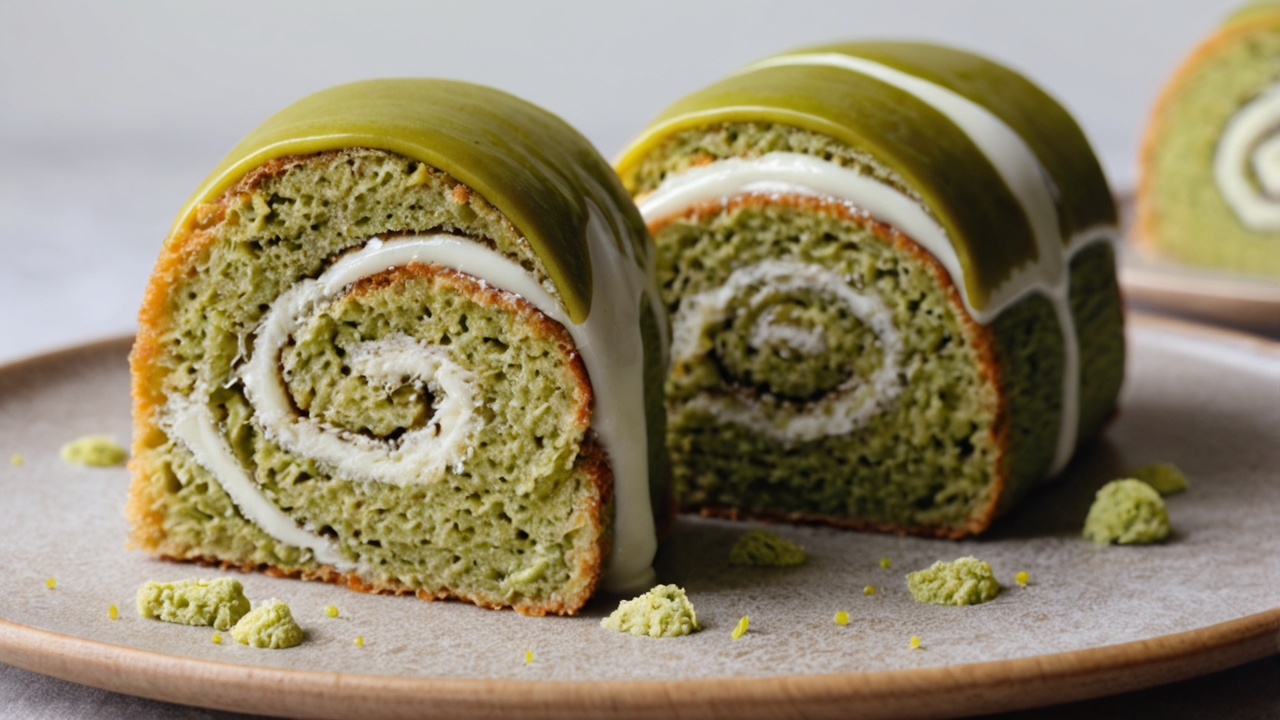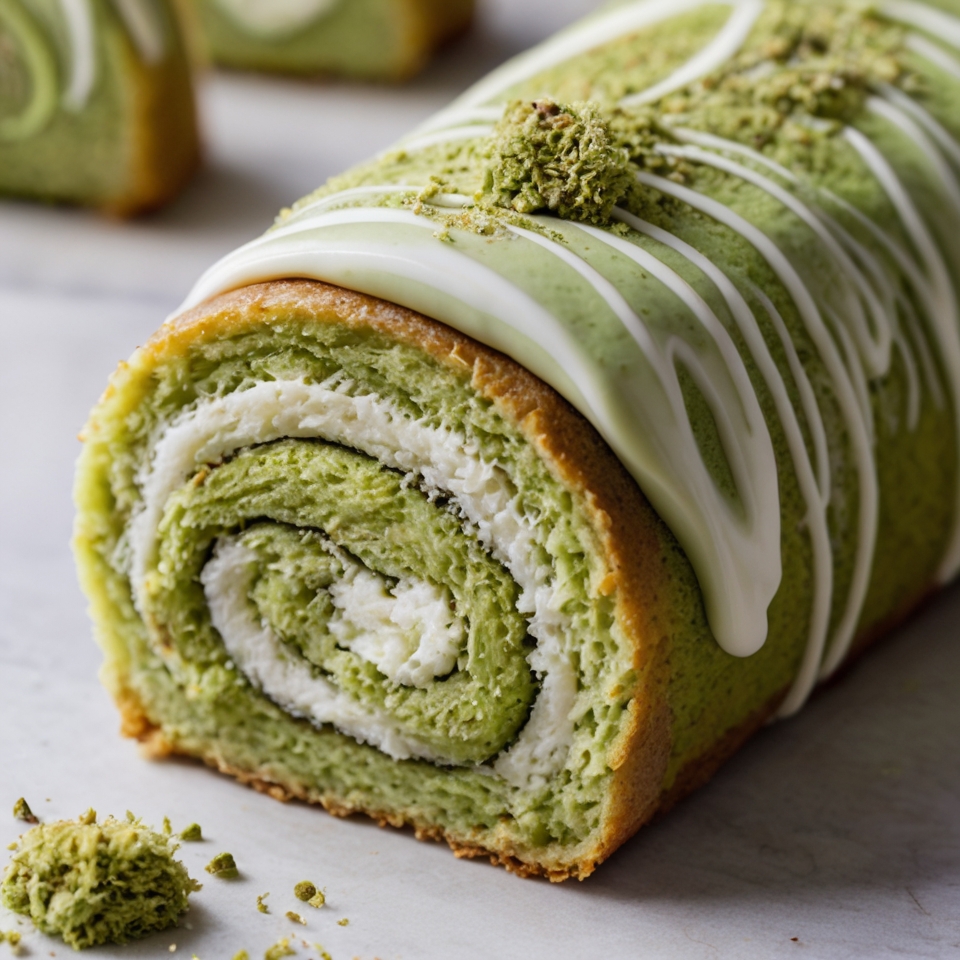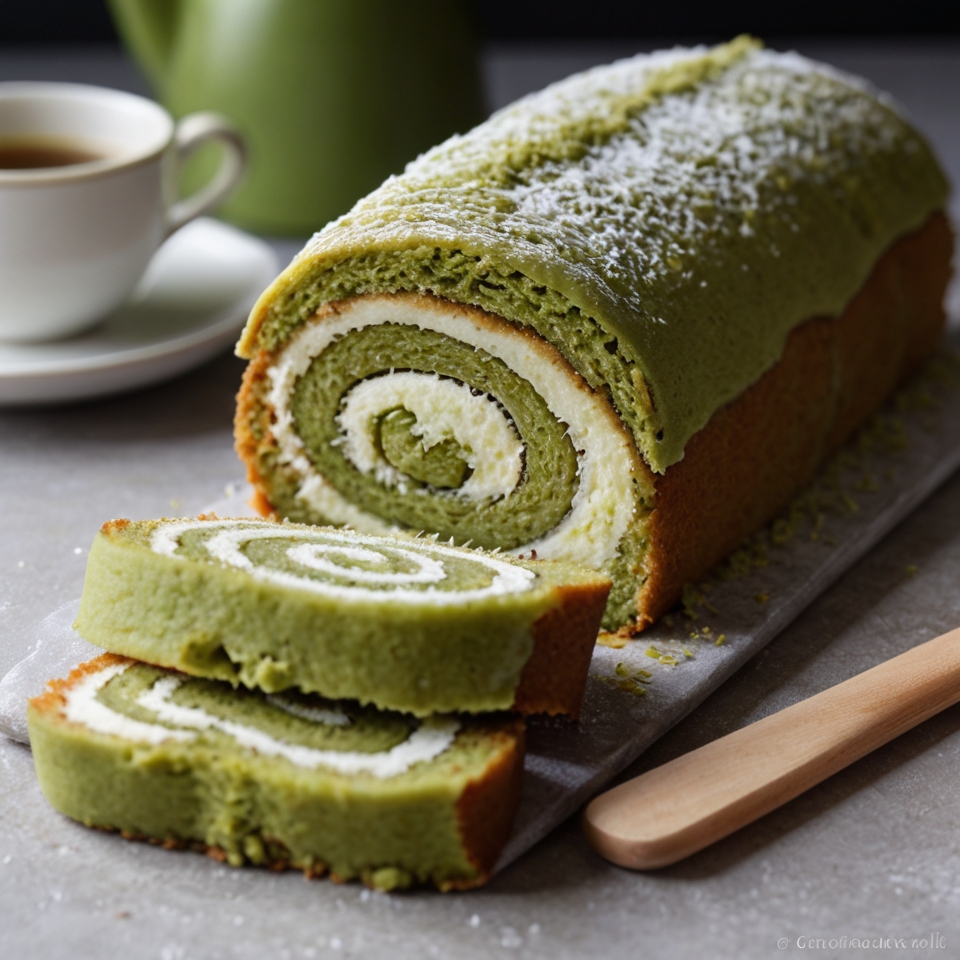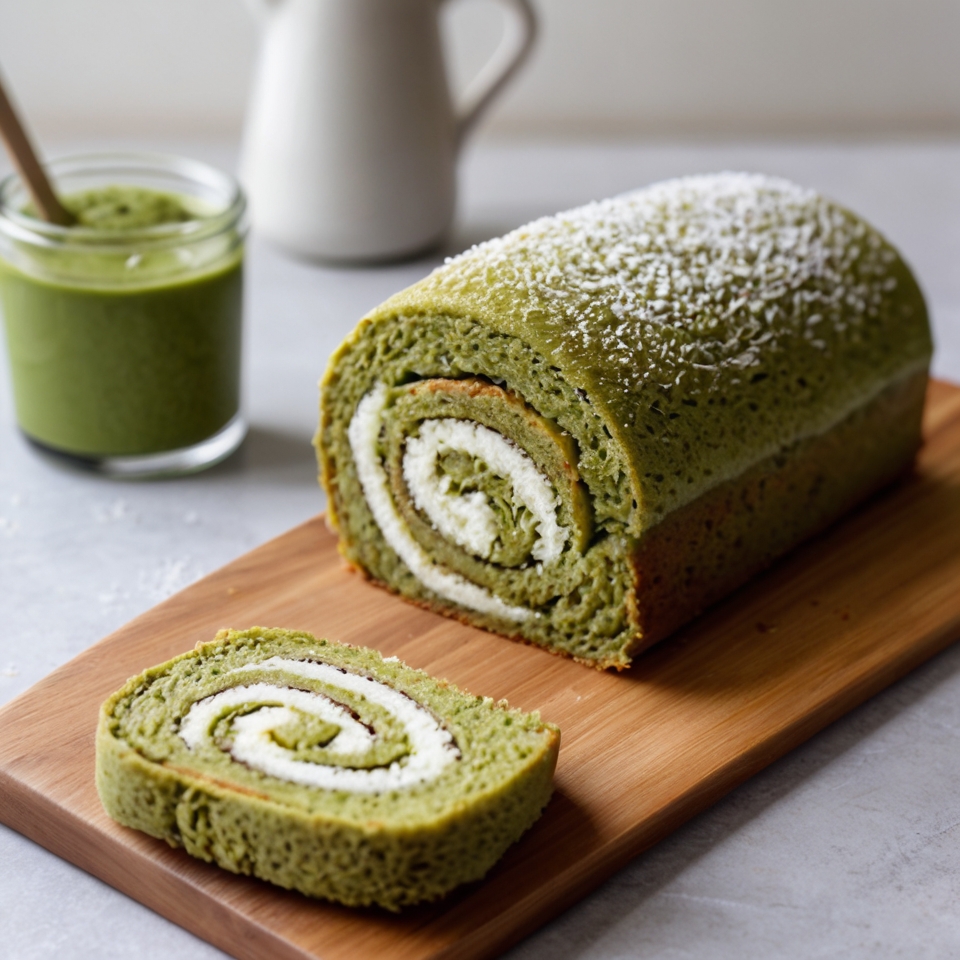
Fluffy Matcha Roll Cake Recipe, A Delightful Blend of Sweetness and Serenity
Biobaeckerei – There’s something mesmerizing about a Matcha Roll Cake that vibrant green hue, the pillowy texture, and the subtle balance between bitterness and sweetness. Unlike ordinary sponge cakes, a Matcha Roll Cake carries the essence of Japanese elegance in every bite. The matcha flavor not only adds depth but also creates a soothing aroma that transforms simple dessert-making into a calming ritual.
As a dessert lover and culinary storyteller, I find matcha desserts fascinating because they merge mindfulness and indulgence. When whisking matcha powder, you’re not just mixing ingredients; you’re crafting a moment of tranquility one that’s reflected in the soft layers of this roll cake. It’s a dessert that doesn’t shout for attention but captivates quietly through balance and grace.
“Read also: The Hidden Impact of Organic Food on Your Wellbeing“



Gathering the Ingredients for a Perfectly Fluffy Texture
To make the perfect Matcha Roll Cake, precision and quality are everything. You’ll need:
- 4 large eggs (separated)
- 70g of sugar
- 60g of cake flour
- 1 tbsp of premium matcha powder
- 30ml of milk
- 20ml of vegetable oil
- A pinch of salt
For the filling:
- 200ml of heavy cream
- 2 tbsp of powdered sugar
- ½ tsp of vanilla extract
The secret lies in choosing high-quality matcha preferably ceremonial grade. Inferior matcha tends to be bitter and dull in color, while premium matcha delivers a natural sweetness and a deep, earthy green tone. Personally, I prefer Uji matcha from Kyoto for its aromatic and slightly creamy profile, perfect for desserts like this.
The Art of Making a Light and Airy Sponge
Creating a soft sponge is all about mastering the meringue. Start by whisking the egg yolks with half the sugar until pale and thick, then gently fold in the sifted flour and matcha powder. Add milk and oil to keep the batter smooth and moist.
In a separate bowl, whip the egg whites with the remaining sugar until soft peaks form. This step is crucial overbeaten whites can make your cake dry, while under-whipped whites lead to a dense texture. Fold them into the batter carefully, preserving as much air as possible.
When baked just right, the sponge should be elastic, slightly springy, and delicately fragrant the perfect canvas for the creamy filling that comes next.
Baking with Precision and Patience
Pour the batter into a lined 30x40cm baking pan, spreading it evenly with a spatula. Tap gently to remove air bubbles and bake at 170°C (340°F) for 12–15 minutes. The aroma of matcha will soon fill your kitchen, offering that serene tea-house vibe even before the cake is done.
Once baked, immediately remove it from the pan and place it on a new parchment sheet. Roll it gently while still warm this prevents cracking later when filled. Personally, I find this step meditative. The warm sponge between your hands feels alive, flexible, and full of promise, much like the art of matcha itself graceful and patient.
Crafting the Silky Cream Filling
For the filling, whip the heavy cream, powdered sugar, and vanilla until soft peaks form. The goal is to achieve a consistency that’s light yet stable enough to hold the roll’s shape. You can add a small spoon of matcha powder for a more intense flavor or fold in sweet red bean paste (anko) for a traditional Japanese twist.
What makes the Matcha Roll Cake so special is this harmony the airy sponge embraces the creamy center, creating a melt-in-your-mouth sensation. Each bite feels like a gentle conversation between texture and flavor.
“Read more: The Irresistible Charm of Takoyaki in Japan“
Assembling the Matcha Roll Cake with Care
Once the sponge has cooled slightly, unroll it and spread an even layer of cream, leaving a small border to prevent overflow. Roll it back carefully using the parchment paper for support. Wrap it tightly and refrigerate for at least one hour to set the shape.
This resting period allows the flavors to meld beautifully the sponge absorbs the faint sweetness of the cream, and the matcha’s bitterness softens, resulting in perfect balance. When you finally slice it, the spiral pattern is not just aesthetically pleasing but symbolic a swirl of time, patience, and love for detail.
Presentation: Turning Simplicity into Elegance
A true Matcha Roll Cake doesn’t need elaborate decoration. A light dusting of matcha powder or a few edible flowers can elevate its beauty effortlessly. You can also drizzle white chocolate or pair it with a cup of warm genmaicha for a comforting afternoon tea.
In my opinion, this dessert represents more than just baking it’s mindfulness expressed through flavor. The calm green tones, the delicate texture, and the aroma of matcha create a multi-sensory experience that lingers well beyond the last bite.
A Dessert That Marries Tradition and Modern Taste
While the Matcha Roll Cake has roots in Japanese tea culture, its appeal transcends borders. Today, it graces cafés and patisseries across the world, loved for its lightness and aesthetic charm. The combination of traditional matcha with Western sponge techniques reflects how food evolves bridging cultures while preserving authenticity.
From a culinary perspective, I find this fusion fascinating. It teaches us that tradition and innovation can coexist beautifully when guided by respect and creativity. Whether you’re an experienced baker or a curious beginner, making a Matcha Roll Cake is an experience that nourishes both the palate and the soul.
